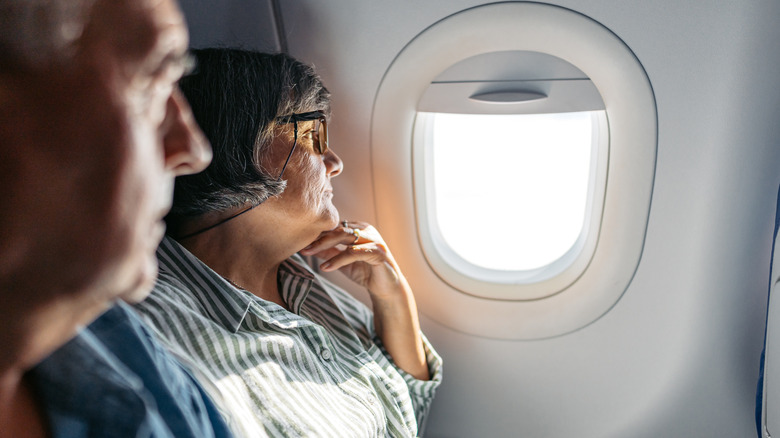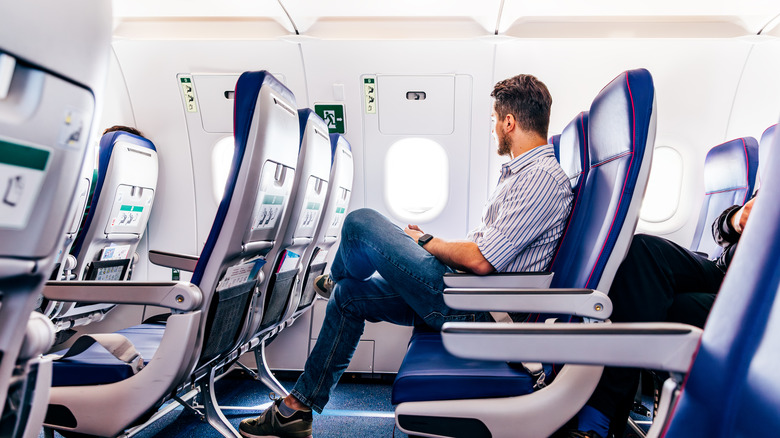The Mistake You're Probably Making When Flying That Could Be Detrimental To Your Health
If you're an avid traveler, you probably know the pre-flight safety demonstration well enough to do it yourself. However, there are plenty of in-flight safety mistakes that passengers make without realizing — even if they've been flying for a long time. And, believe it or not, one of those mistakes can be sitting in the wrong position during a long flight.
Even though you might worry about how to position yourself in your tiny seat so that you don't arrive at your destination stiff or with your foot asleep, how you sit can actually make a significant difference to your health. That's why, although it might feel comfortable, you may want to avoid spending the whole flight with your legs crossed — especially if you're worried about blood clots.
To find out exactly what the risks of sitting cross-legged on a flight are, who it's an issue for, and how travelers should try to sit instead, Islands spoke to Dr. Jason Singh, or @drjaysonisfresh to his more than 68,000 followers on Instagram, Chief Medical Officer at One Oak Medical Group. Dr. Singh explained that crossing your legs can increase the risk of blood clots on a flight, saying: "This causes inactive calf muscle which allows blood to pool in the legs and can risk a blood clot in prone individuals ... the risk is amplified for people with genetic clotting disorders, those taking estrogen-containing medications, cancer patients, and individuals with heart failure, as their underlying physiology already predisposes them to dangerous blood clot formation."
How should people at higher risk of blood clots sit on flights?
If you're concerned about blood clots during long flights and train trips, one of the best things you can do is get up and walk around as much as possible during the trip. Beyond that, the way you choose to sit can also have a tremendous impact on how risky your travel journey is. According to Dr. Singh, "the optimal flight posture involves keeping feet flat on the floor or footrest with knees at 90 degrees, combined with regular movement every 45 mins and consideration of compression stockings for high-risk individuals." This is great advice even if you aren't at risk of a blood clot, since it can also help prevent the uncomfortable feeling of having your ankles swell up on a flight.
If you're not sure you can sit that way for the entire flight, Dr. Singh did share with us that not all ways of sitting cross-legged are equally dangerous. Specifically, the riskiest way is placing one ankle on your knee, in the shape of the number four (as pictured). He explained that, out of all the ways of crossing your legs, this one causes the most concerning vascular compression and nerve pressure. Instead, crossing your ankles is significantly safer.

